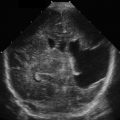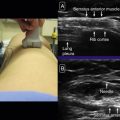Considerations when Performing A Pediatric Cardiac Ultrasound Assessment
An increasingly used clinical tool for pediatric cardiac assessment is transthoracic echocardiogram (TTE). TTE has the benefits of being noninvasive, portable, and effective in providing detailed anatomic, hemodynamic, and physiologic information about the pediatric heart. A pediatric cardiac ultrasound assessment has some distinctive features and considerations compared with TTE studies performed in adult patients. Pediatric patients are at risk for a wide spectrum of congenital heart defects and cardiac diseases that are unusual in adults. Certain TTE views are of added importance for pediatric assessment. In addition, tremendous patience and special techniques may be required for imaging uncooperative infants and young children. The aim of this section is to provide practical advice and recommendations to persons comfortable with imaging the adult heart but who may lack familiarity with pediatric heart disease.
Unique Differences between Pediatric and Adult Patients
The first noticeable difference in pediatric TTE is that the absolute sizes of cardiac structures are generally smaller. With normal hemodynamics, body size becomes the strongest determinant of the size of cardiovascular structures. All cardiovascular structures increase in size relative to somatic growth, a phenomenon known as cardiovascular allometry . Because of the wide range of sizes of pediatric patients, normative values based on body surface area (z-score values) are preferable.
Patience is required when dealing with uncooperative pediatric patients. The examination rooms should be nonthreatening and comfortable. Family members are encouraged to accompany patients during TTE studies. This avoids issues of separation anxiety in both the children and their parents. Providing entertainment and distractions for the pediatric patient is extremely helpful in obtaining a quality study.
Compared with adults, the incidence of heart disease and the types of cardiovascular disease in children are extremely different. In the United States, myocardial infarction is relatively common in adults, with over 700,000 episodes each year. Pediatric patients have a greatly lower incidence of acute myocardial infarction, with an estimated incidence of roughly 157 per year. Congenital heart disease (CHD) is much more commonly encountered in pediatric patients ( Table 10.1 ). The overall incidence of CHD is estimated to be 8 per 1000 live births. The most common forms of CHD are septal defects, such as muscular ventricular septal defects (VSDs), perimembranous VSDs, and secundum atrial septal defects (ASDs) (2.7, 1, and 1 per 1000 births, respectively). The incidence for clinically severe conditions is approximately 3 per 1000 births, and when including moderately serious conditions is 6 per 1000 births. The incidence of tetralogy of Fallot (the most common cyanotic form of CHD) is twice that of dextro-transposition of the great arteries (0.47 versus 0.23 per 1000 births).
| Congenital | Left heart obstruction—one of the most common reasons for heart failure presenting in the first month of life | Aortic stenosis ( Fig. 10.4 ) Coarctation of the aorta (see Fig. 10.2 ) Mitral stenosis Shone’s complex HLHS | |
| Cyanotic heart conditions | Tetralogy of Fallot (pulmonary atresia with VSD) Transposition of the great arteries Single ventricles (HLHS, DILV, PAIVS) Total anomalous pulmonary venous return | ||
| Left-to-right shunts or septal defects | VSD (CHF usually develops at about 6 weeks) (see Fig. 10.3 ) Atrioventricular septal defects PDA (variable depending on size) ASD (CHF symptoms in years, maybe decades of life) | ||
| Noncongenital | Kawasaki’s disease Various forms of cardiomyopathy Myocarditis and pericarditis | ||
| Etiology of Heart Failure in Pediatrics | |||
| Prenatal | Causes of hydrops fetalis (immune 10%–20% and nonimmune 80%–90%) | ||
Cardiovascular disorders represent about 20% of nonimmune hydrops fetalis
| |||
Chromosomal/genetic syndromes
| |||
| Newborns | Left-sided obstructive lesions
d-TGA PDA (left-to-right shunt)—preterm infants Obstructed TAPVR | ||
| Sepsis Birth asphyxia with myocardial ischemia Hypoglycemia Hypocalcemia Hypothyroidism Severe anemia Arrhythmias Myocarditis Cardiomyopathy | |||
| 2–6 weeks | Left-to-right shunts predominate (due to decrease in pulmonary vascular resistance) VSDs AVSDs Others: PDA, AP window, unobstructed TAPVR, truncus arteriosus | ||
| Infants and toddlers | Typically present with failure to thrive Left-to-right shunts Less severe left-sided obstruction ALCAPA Cardiomyopathies/myocarditis | ||
| Adolescents | Typically present with exercise intolerance, dyspnea, and excessive fatigue Cardiomyopathy Aortic regurgitation Mitral regurgitation or stenosis Systemic or pulmonary hypertension Acquired heart disease Myocarditis, rheumatic, cardiotoxic drugs | ||
Stay updated, free articles. Join our Telegram channel

Full access? Get Clinical Tree





